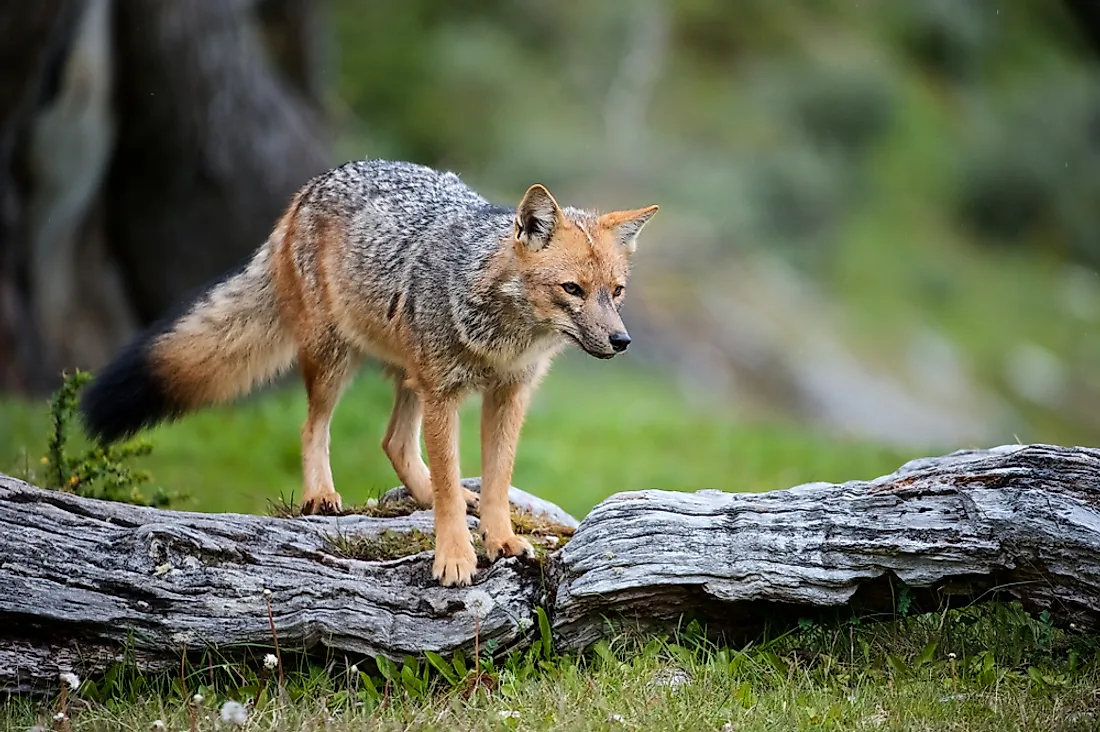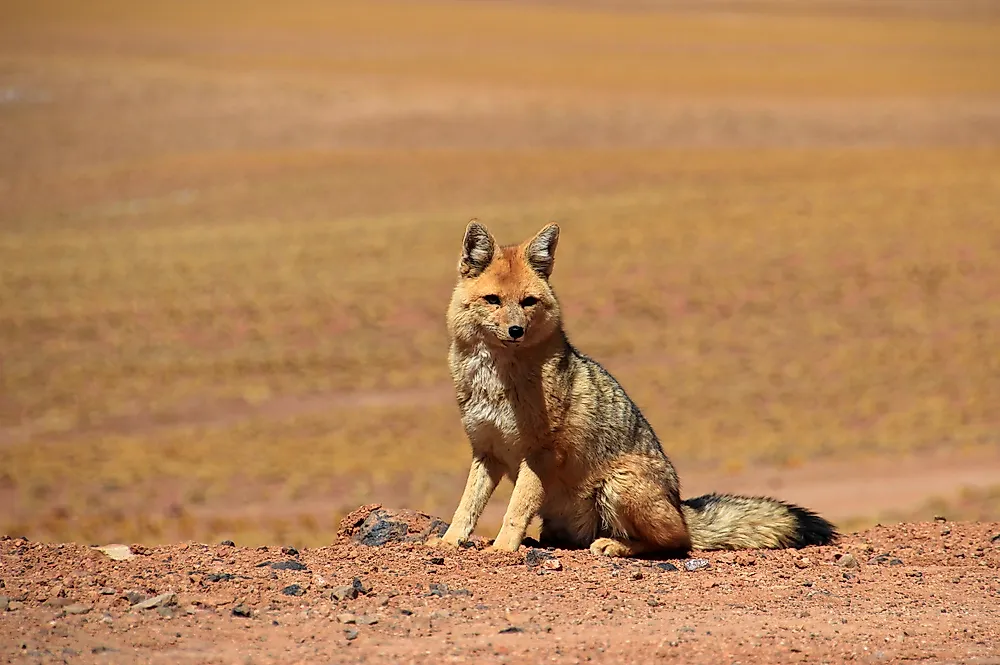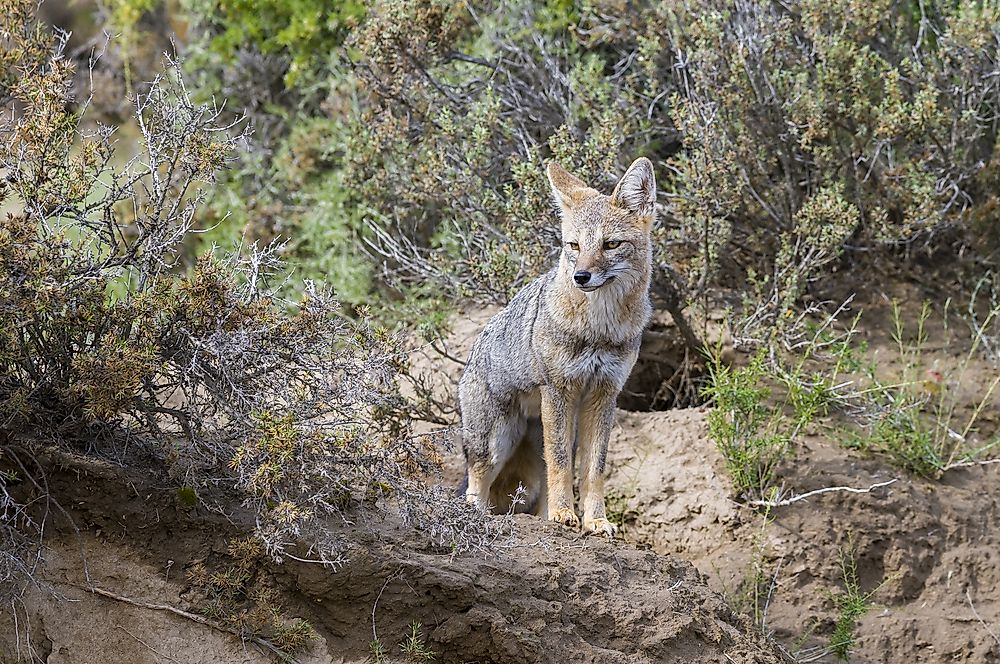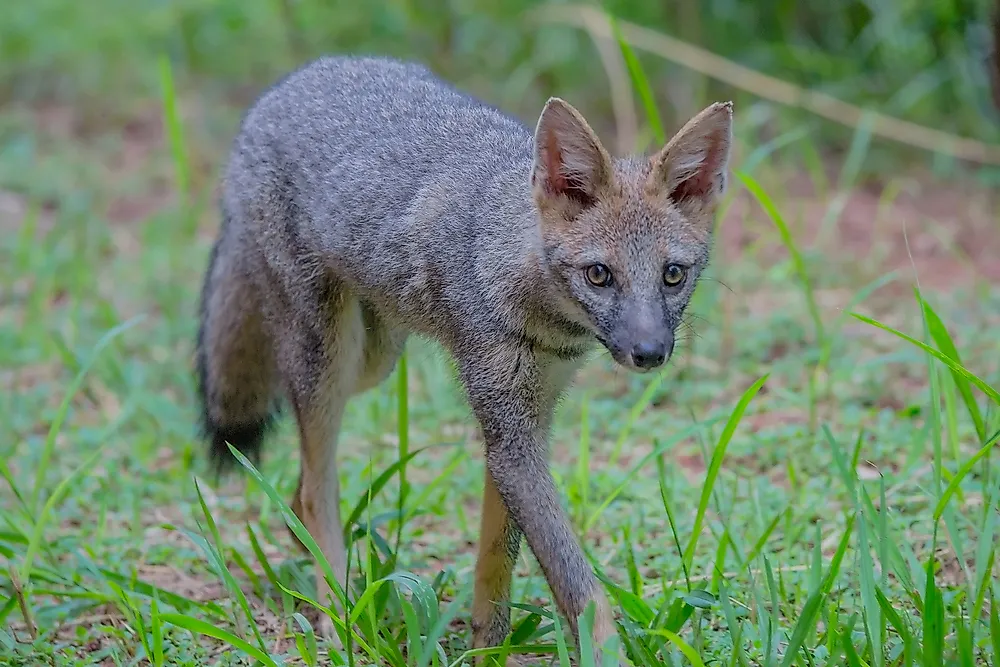The Six Species Of South American Fox

The Lycalopex genus of the Canidae family has the common name of South American fox. Six extant species are included in this genus, all of which have ‘fox’ in their common names. However, despite their name, the species of the Lycalopex genus are not true foxes (the species of the Vulpes genus of Canidae are called the true foxes) but are more closely related to jackals and wolves. Here is a list of the species of this genus:
6. Darwin's Fox

The Lycalopex fulvipes has a restricted range limited to Chile’s Valdivian Coastal Range, the Chiloé Island, and the Nahuelbuta National Park. The species mainly live in the south temperate rainforests. It has a large prey base that consists of invertebrates, birds, reptiles, amphibians, etc. The Darwin’s fox is an endangered species with only a few hundred surviving mature individuals living in the wild today. Of this, nearly 90% of the population is found on the Chiloé Island. The species faces numerous threats to its survival. Persecution by humans who consider foxes a threat to their domestic fowls, habitat fragmentation due to developmental activities, and killing by feral dogs are some of the biggest threats to these foxes.
5. Culpeo

The Lycalopex culpaeus is the second largest canid living in South America and closely resembles the red fox in appearance. The diet of this species consists of rodents, birds, reptiles, and occasionally plant parts and even carrion. Although the populations of this species are low in some regions, it is still labeled as a ‘Least Concern’ species on the IUCN Red List. The largest populations of the culpeo are found on the western slopes of the Andes. The species can adapt to a wide variety of habitats including deserts, high plateaus, temperate rainforests, etc.
4. The South American Gray Fox
Also known as the Patagonian fox, the Lycalopex griseus is endemic to South America’s southern part where it lives on either side of the Andes Mountain Range. The species inhabits the semi-arid habitats in its range. The South American gray fox has a varied diet that is different in different seasons and in different parts of its range. The species is an omnivore that feeds on fruits, birds, mammals, reptiles, and even carrion. Rodents comprise the majority of their diet. These animals play important roles as scavengers in the areas they inhabit. They also often venture near human settlements in search of poultry and sheep. Although these animals have been hunted for years for their pelts, their relatively stable and widespread populations lead to their classification as a ‘Least Concern’ species.
3. Pampas Fox

Also known as the Azara’s fox, the Lycalopex gymnocercus lives in the pampas region of South America. This species also lives in the wetlands, dry scrublands, Chaco and montane forests in its range. The Pampas fox mainly lives at elevations below 3,300 ft but is also found at higher elevations. These animals are omnivorous by nature and feed on insects, birds, rodents, fruit, carrion, etc. Pumas and feral dogs are their biggest predators. These foxes are usually solitary by nature and mainly hunt at dusk. The Pampas fox is currently not a threatened species. However, humans extensively hunt these foxes for their fur and also kill them to prevent them from attacking their livestock.
2. Sechuran Fox
Also known as the Peruvian desert fox, the Lycalopex sechurae is the smallest of the “false” foxes of zorro found in South America. This species is found living in arid environments in parts of Ecuador and Peru including the Sechura desert where it was first identified. The altitudinal range of species varies between sea-level and 3,300 ft. The fox is a nocturnal and generally solitary creature and an opportunistic feeder. It feeds on both plant parts and animals, including carrion. It can also live without water for long periods of time. The species is labeled as a ‘Near Threatened’ species by the IUCN. Habitat loss and retaliatory killing by humans are the biggest threats to this species. The Peruvian desert fox is also killed for its body parts that are used in preparing folk medicine, indigenous rituals, and local handicrafts.
1. Hoary Fox

The Lycalopex vetulus is a zorro species that is found only in Brazil. These animals usually prefer the cerrado habitat at elevations between 90 and 1,100 meters. They are also found in other types of habitats like savannahs, open woodlands, etc. Unlike other zorros of South America, the diet of the hoary fox predominantly includes invertebrates. However, fruits, birds, and rodents are also occasionally consumed.











